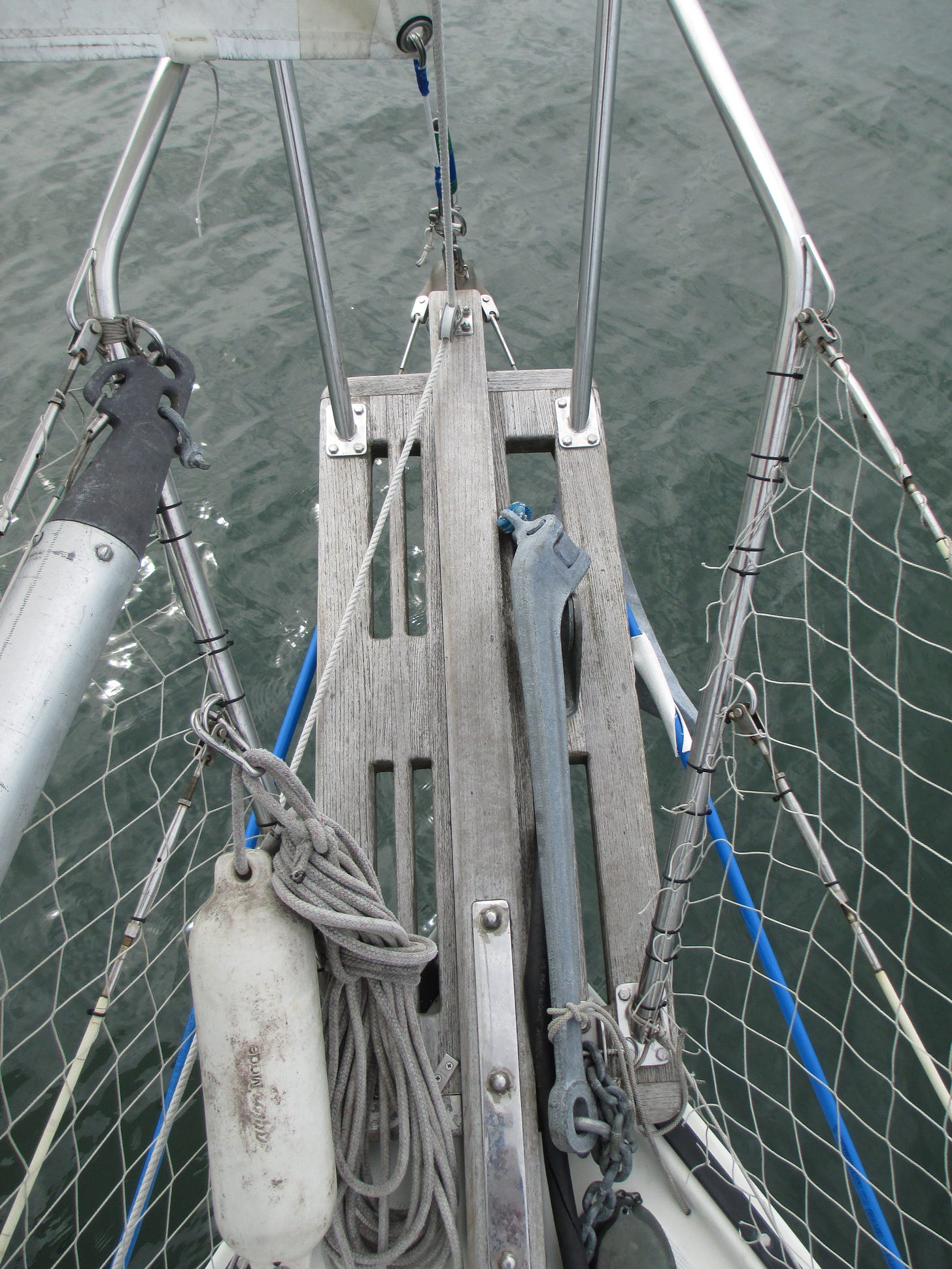Article by Joshua Wheeler
The Resourceful Sailor does not use varnish. Sampaguita has no brightwork on her. But watch the lookie-loos at the dock ogle over a boat (that often never gets used) with shiny brightwork. Why? Aesthetic. The seductiveness of the bright and shiny. It is everywhere, not just with boats.
Little known fact to a non-boater. Varnish is a serious time suck. I had a workmate, David White, whose sales pitch was that varnish was misspelled. It should really be spelled vanish. Because that’s what it does on a boat exposed to the sun’s UV radiation. After you sand and prep the surface, you need six to ten coats of varnish, depending on your desired quality. Then you prep and recoat it with at least one coat every year. If, for some reason, you miss a year or, oh know, two years, you may have to sand it all off and restart. This needs good weather, which is also the best time of the year for using the boat. I watched a fellow Flicka owner spend all of July and half of August revarnishing his outside brightwork. After all that, he said he should put another coat on, but he’ll let the new owners do that. I’ve heard it said that you should only varnish your boat once. Right before you are going to sell it. What a setup for the new owners!
Varnish is for what The Resourceful Sailor calls trophy boats. Go to any wooden boat festival. Wow. If that is your economy and what is important to you, to each their own. But for The Resourceful Sailor, using the boat is what’s important. I’ve known tradespeople whose sole employment was doing brightwork on boats. They do the same jobs year after year. Varnish does create a barrier that protects the wood. However, one of the reasons it needs so many coats is to stabilize the wood and the moisture content. To cut corners is a false economy. Instead, again, the words of David White, “Slather a few coats of paint on there and go sailing.” (Hilariously, nine times out of ten, they still bought the varnish!) It will protect nearly as well for much less time and work.

Admittedly, The Resourceful Sailor used to varnish Sampaguita’s tiller. It was that one shiny element. But having learned what that small experience was like year after year, when I replaced it, I moved to painting. Phew, way easier, way faster, and one less task to distract me each year. The old tiller, I still have as a spare. And I also painted that. Fact: Both are oil-based, so the paint can successfully be put over a stable coat of varnish. Admittedly, I’ve never tried to do it the other way.
So, if you prefer using your boat over working on it, The Resourceful Sailor recommends paint over varnish. It’s not lazy if you actually go sailing. True, the lookie-loos will ogle over your neighbor’s bright and shiny Flicka 20 rather than yours. The Resourceful Sailor doesn’t try to keep up with the Joneses but usually outsails them. Remember, keep your solutions safe and prudent, and have a blast.
This installment of The Resourceful Sailor first appeared in ‘Lectronic Latitude on Jan. 26, 2024.






In defense of varnish, the lifespan can be extended extremely effectively on trailerable small boats that have dedicated canvas covers, often lasting nearly as long as paint. Brightwork is an integral aspect of the romance of wooden boats, and I for one am happy to keep that spark alive despite the naysayers.
John Welsford once told me that whenever he was asked what his favorite varnish was, he always replied "white paint".